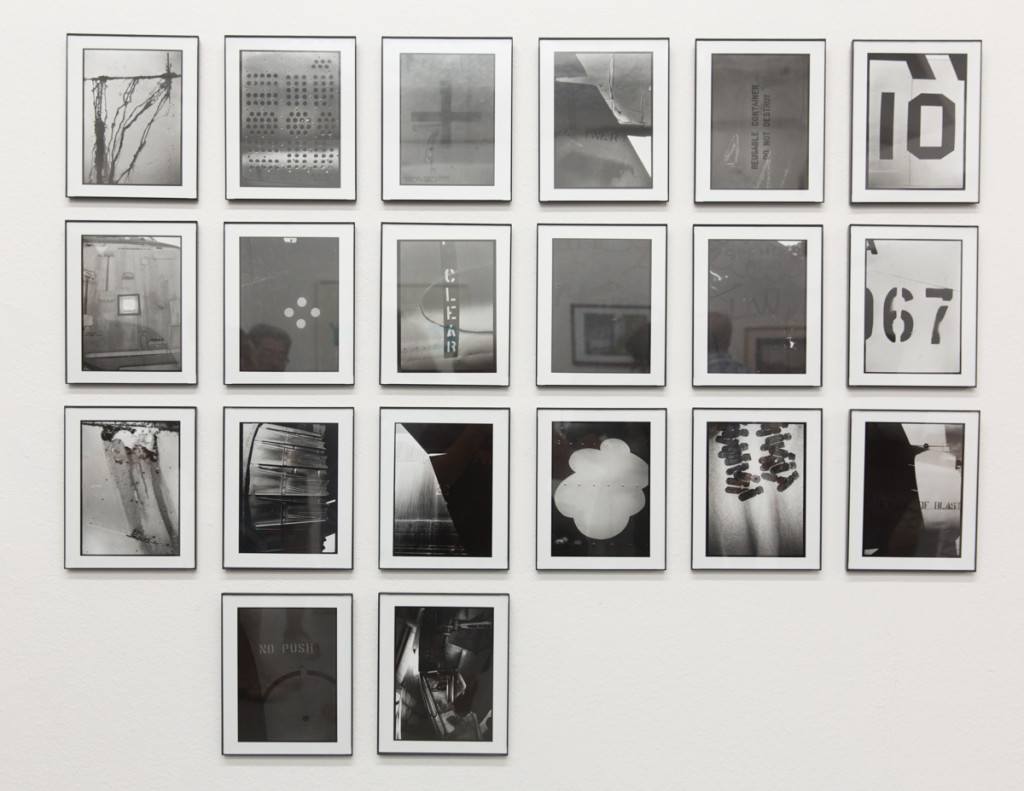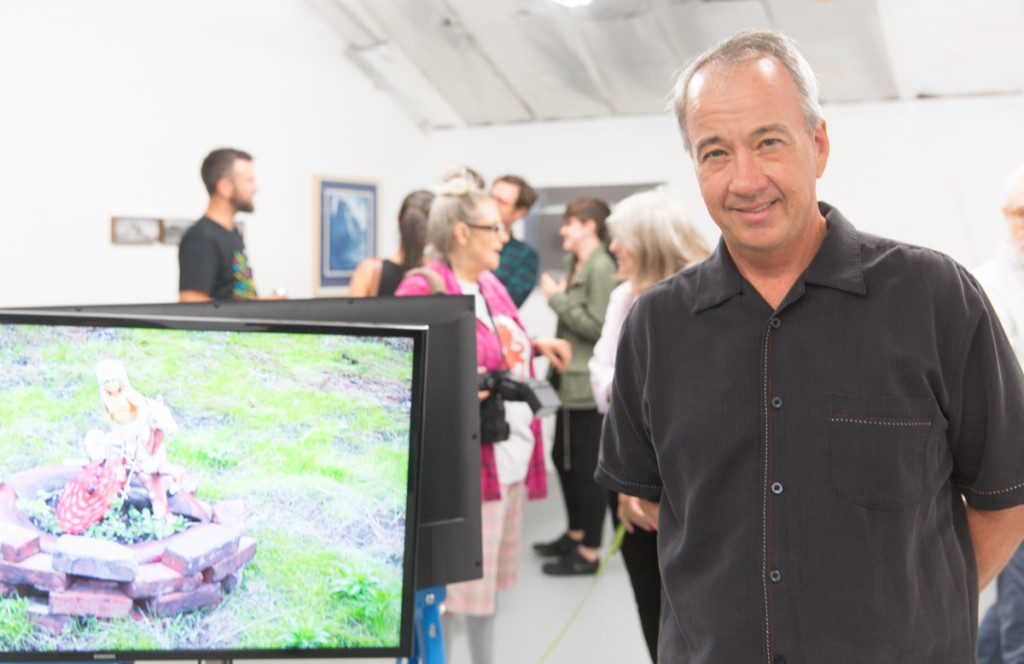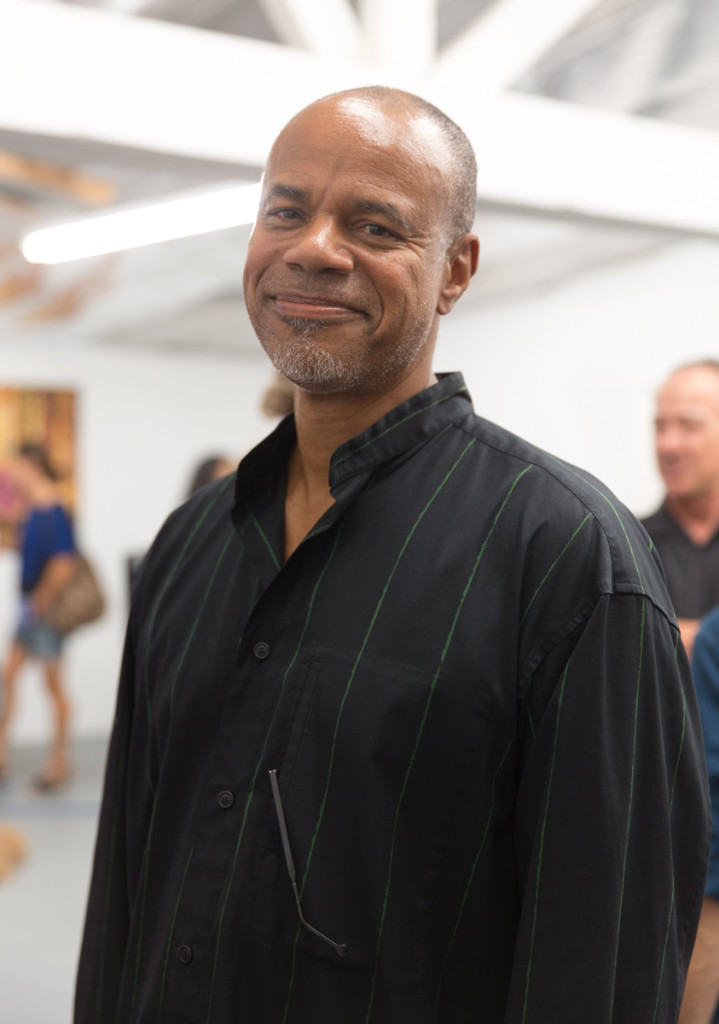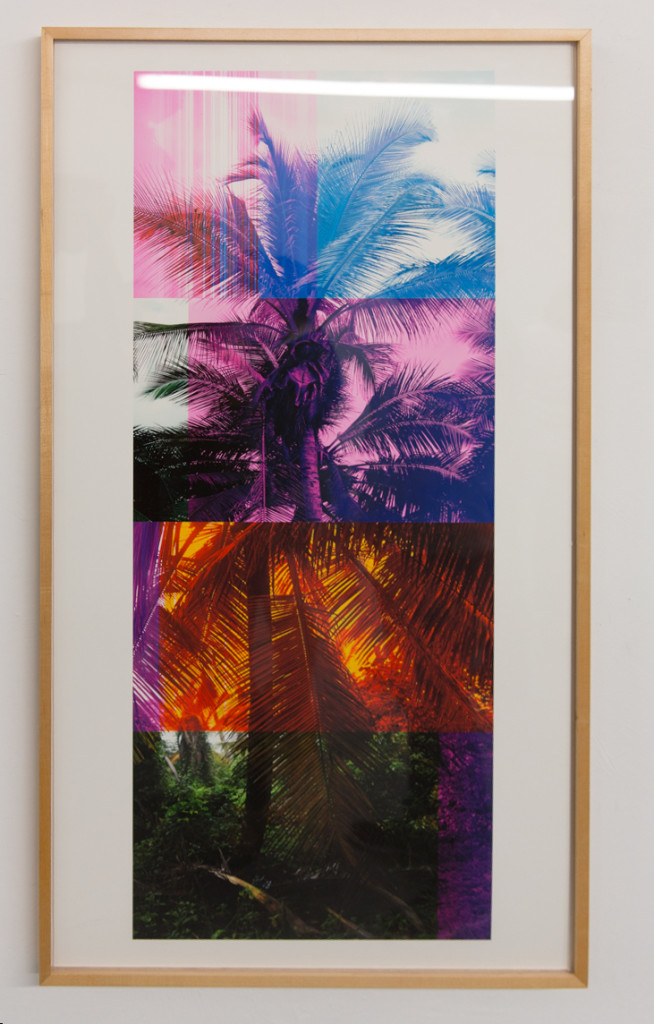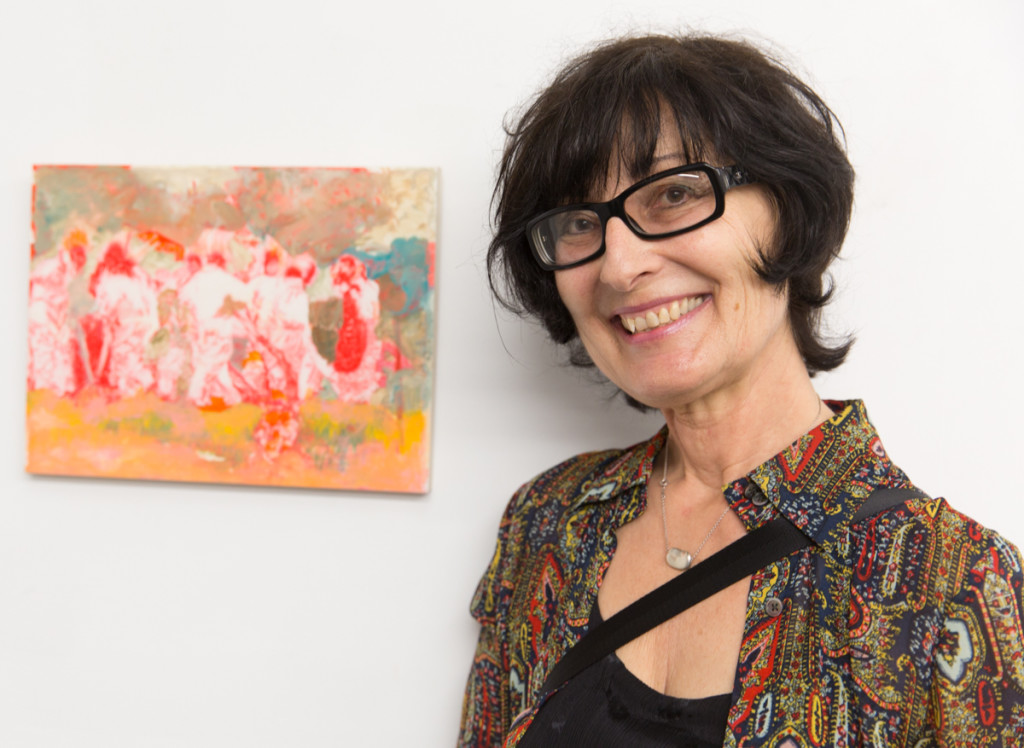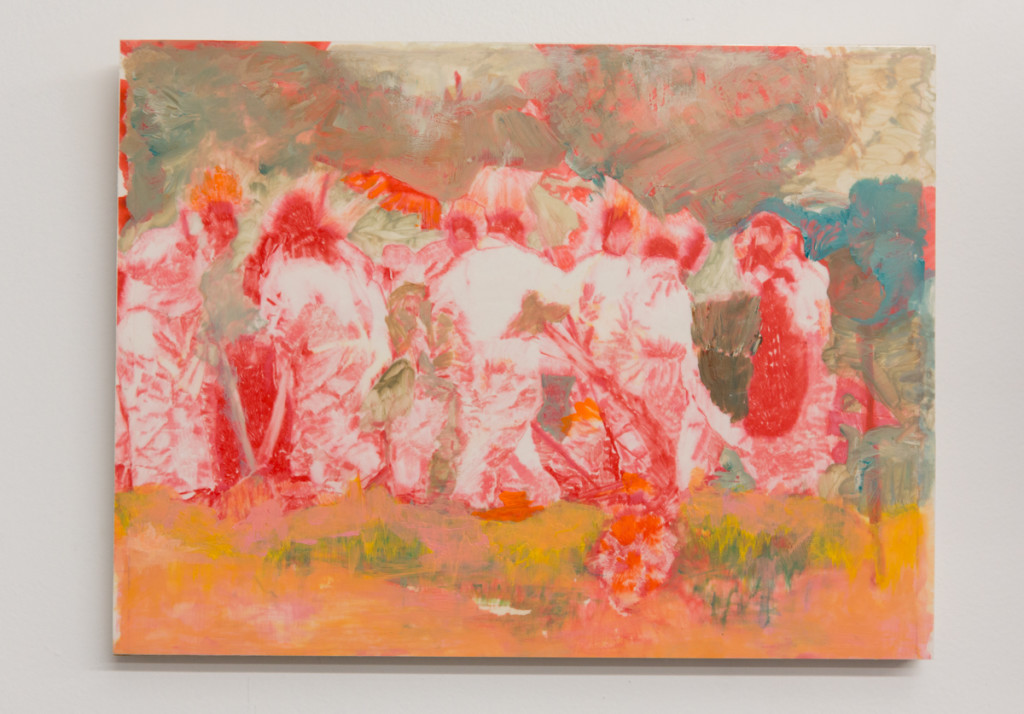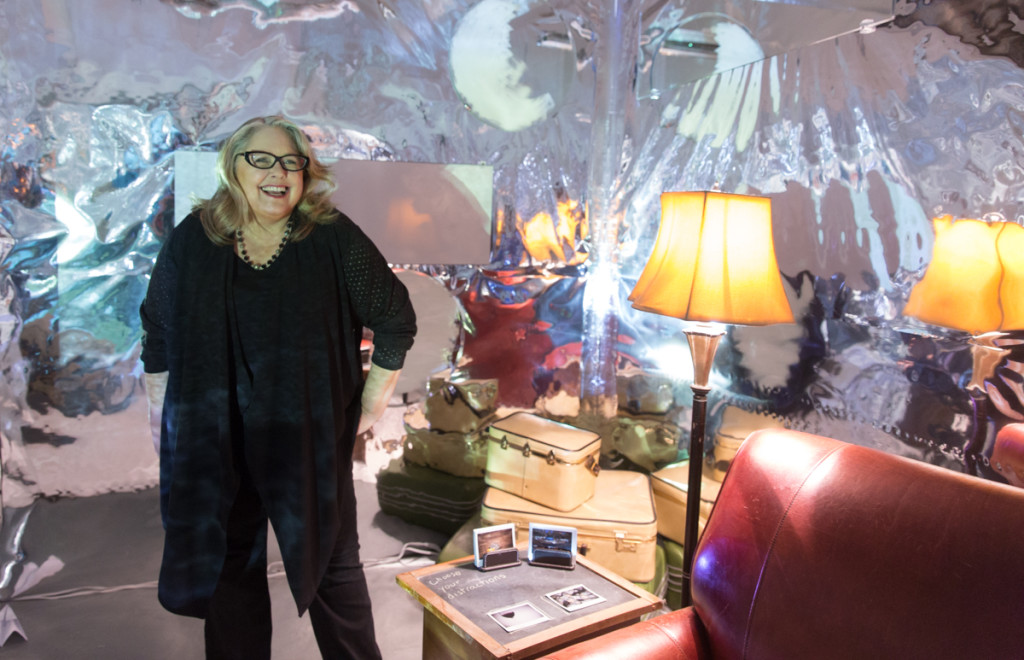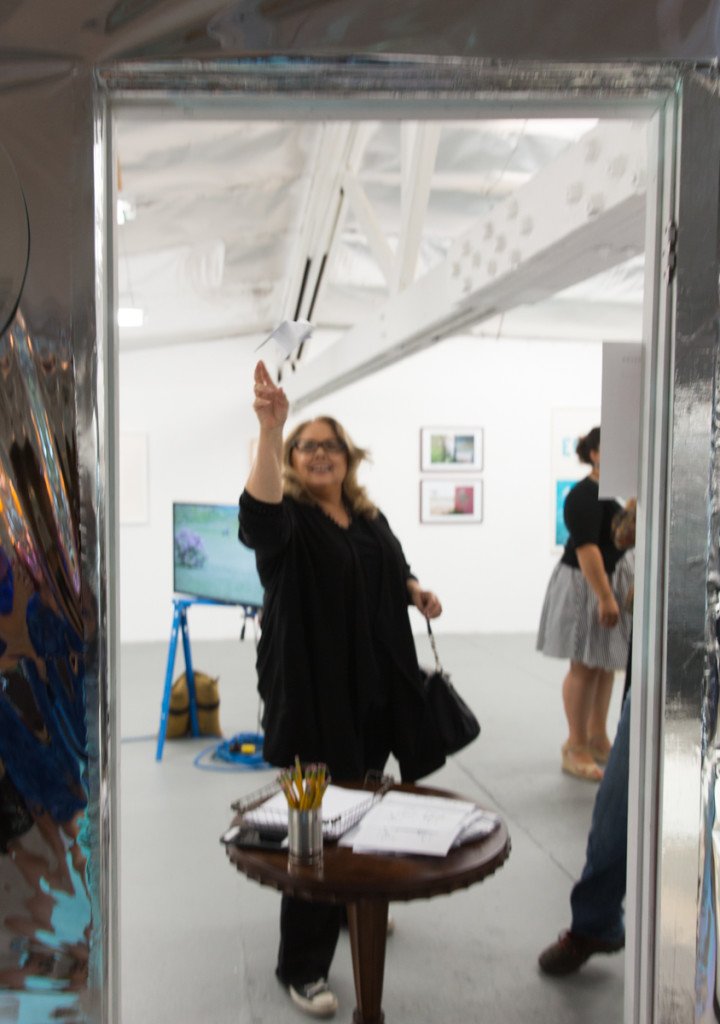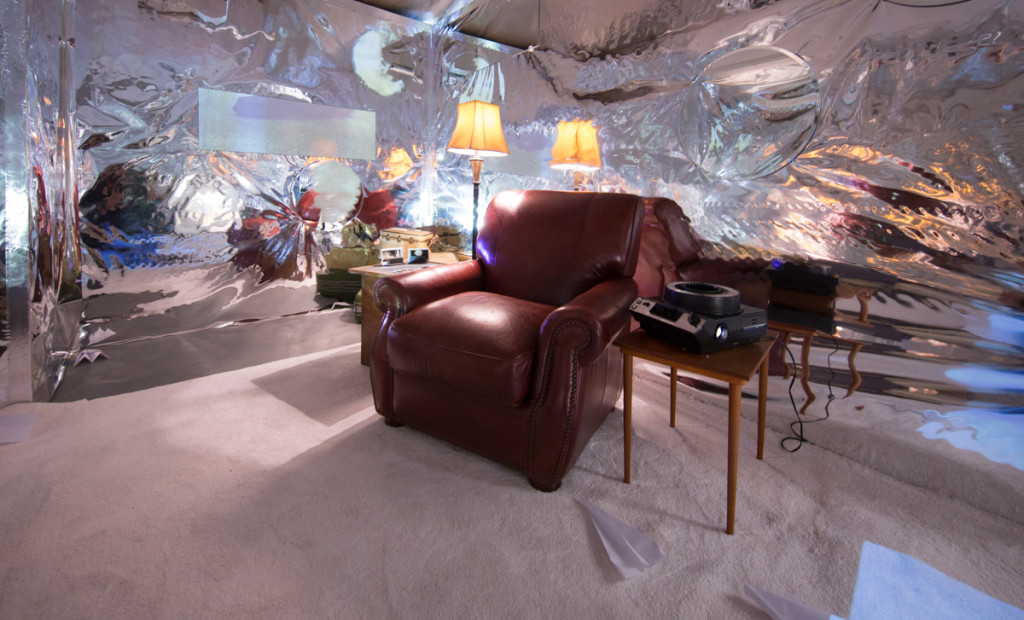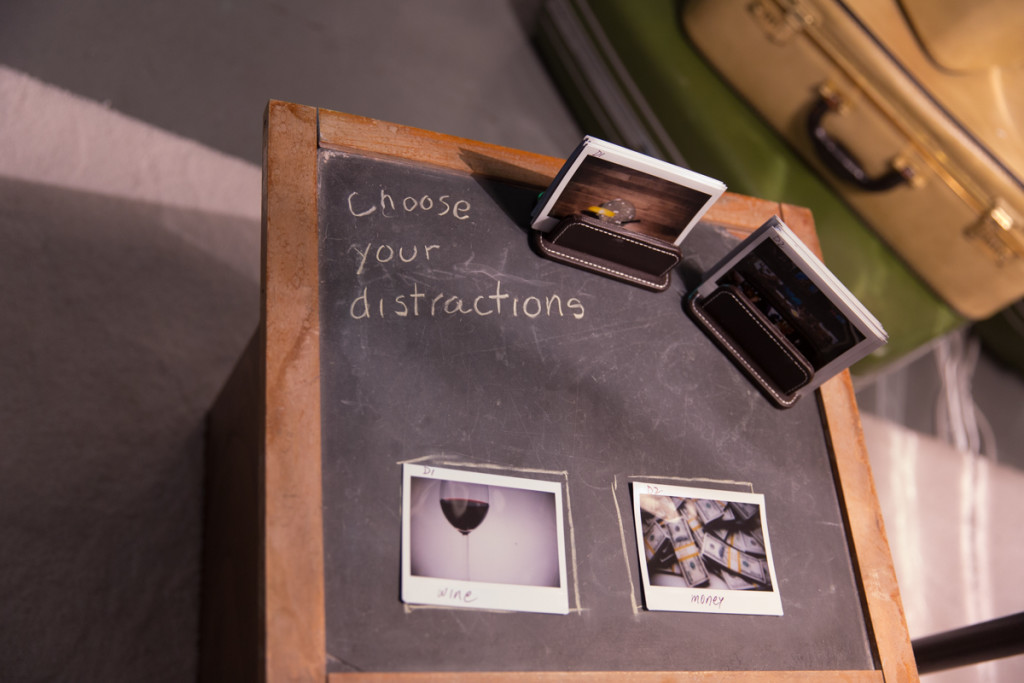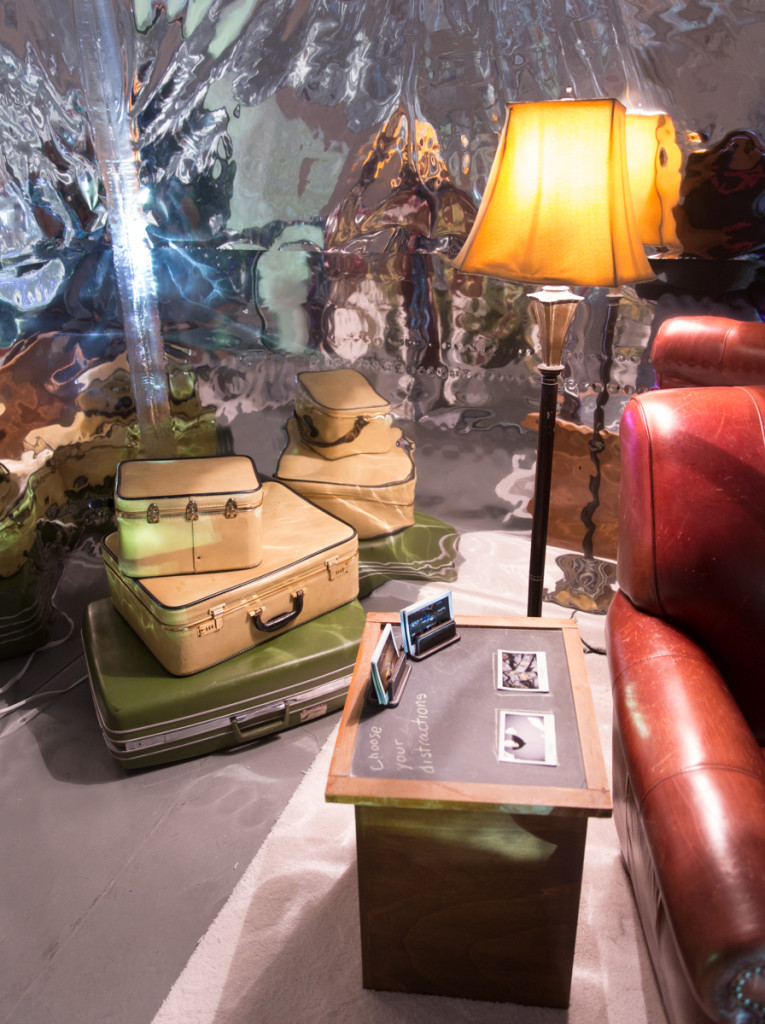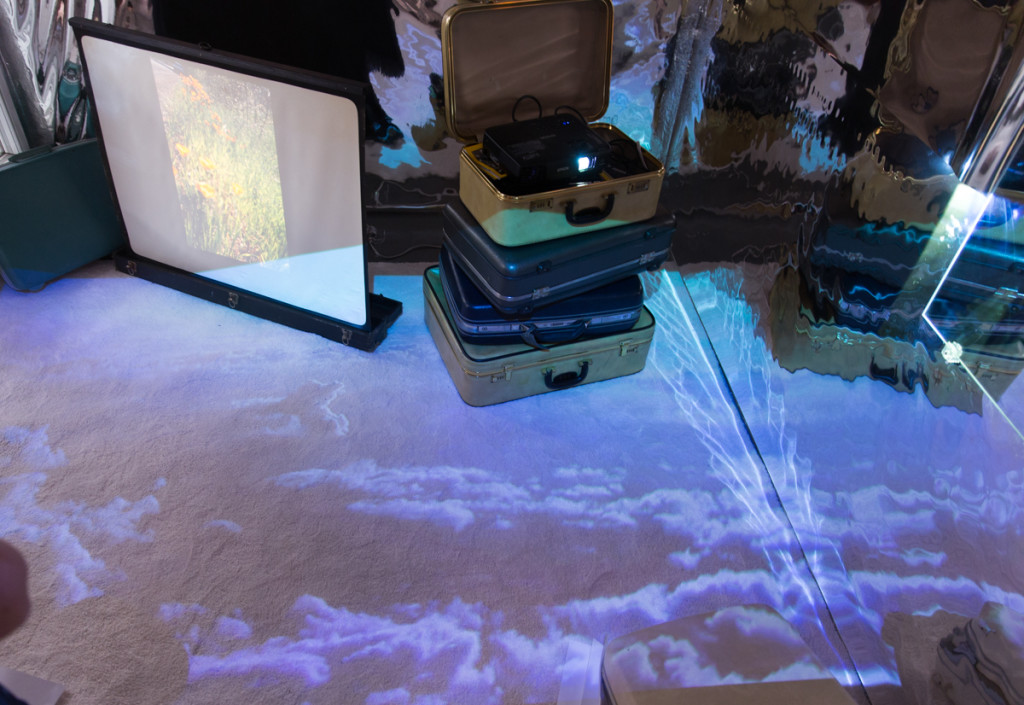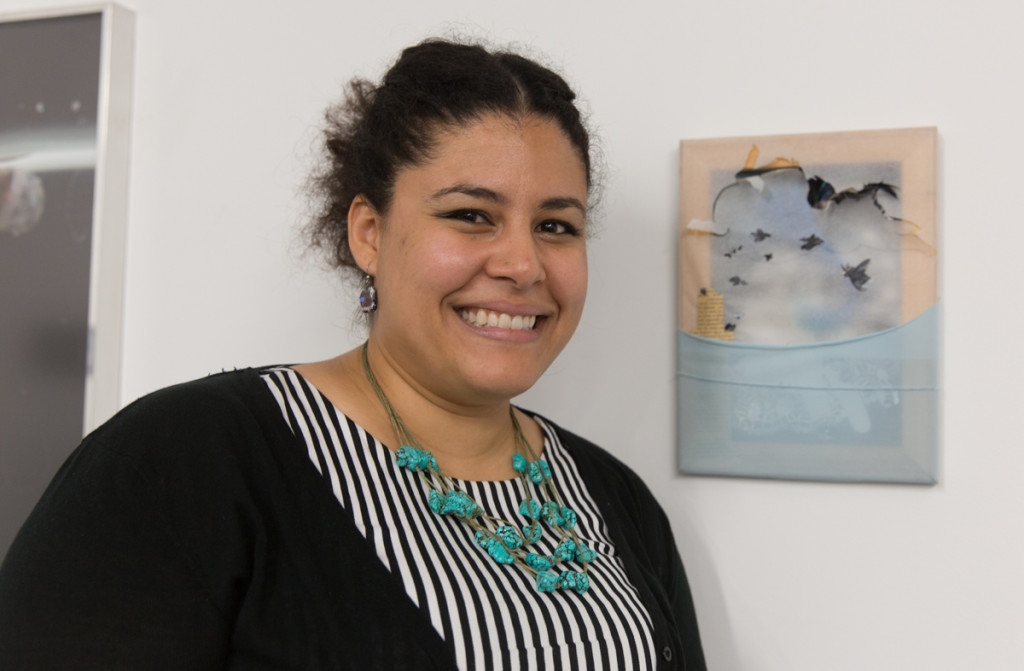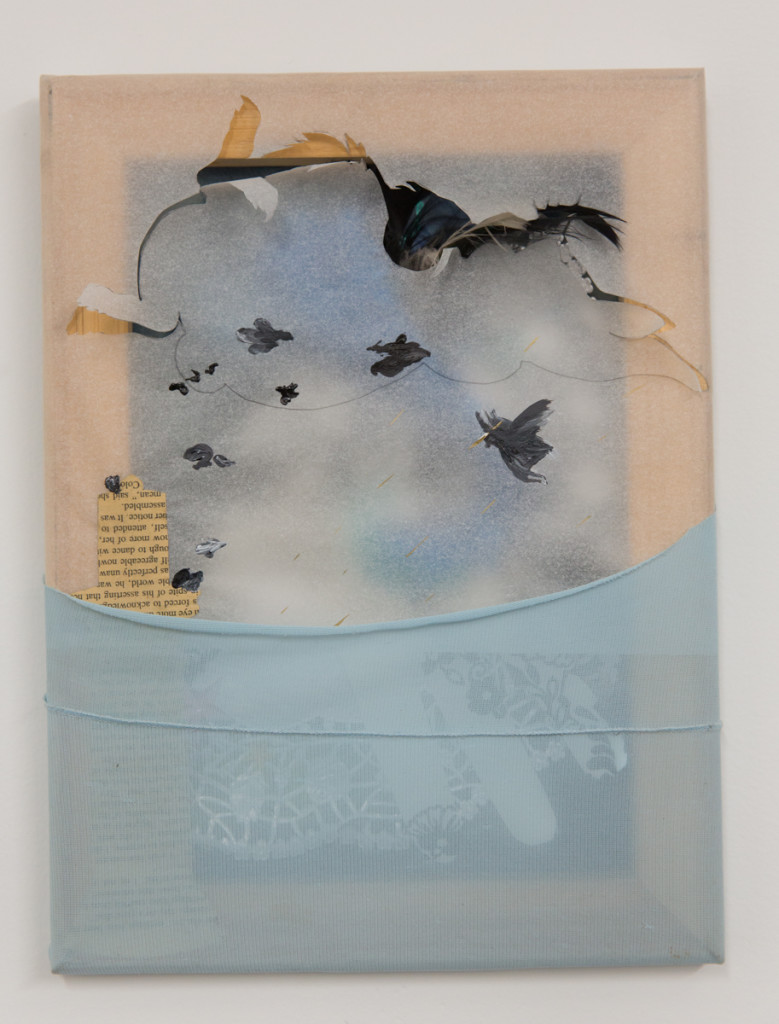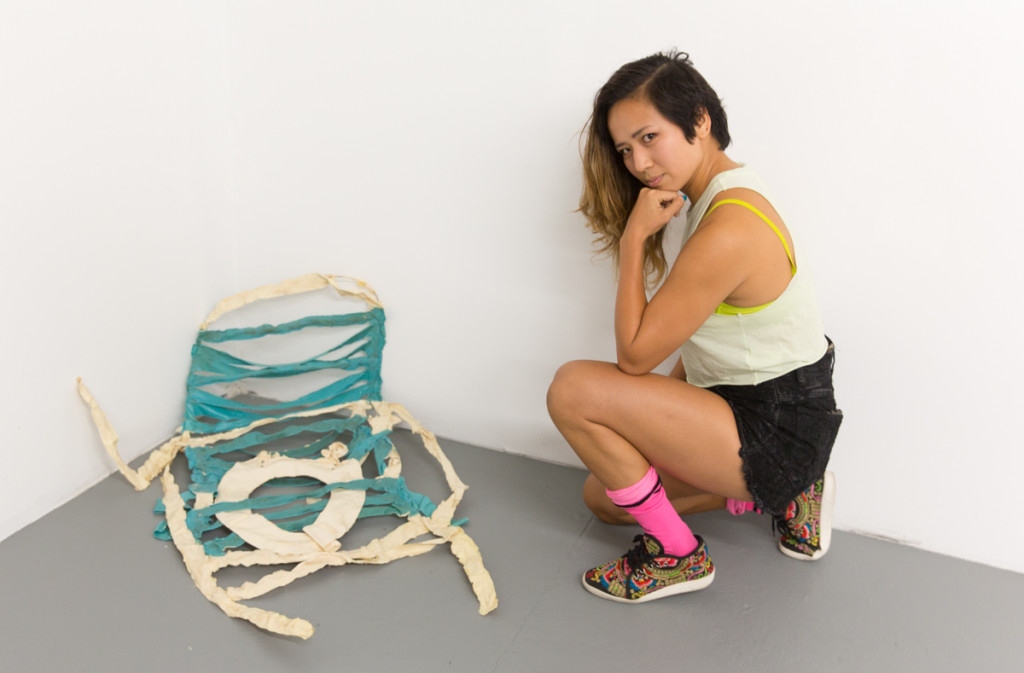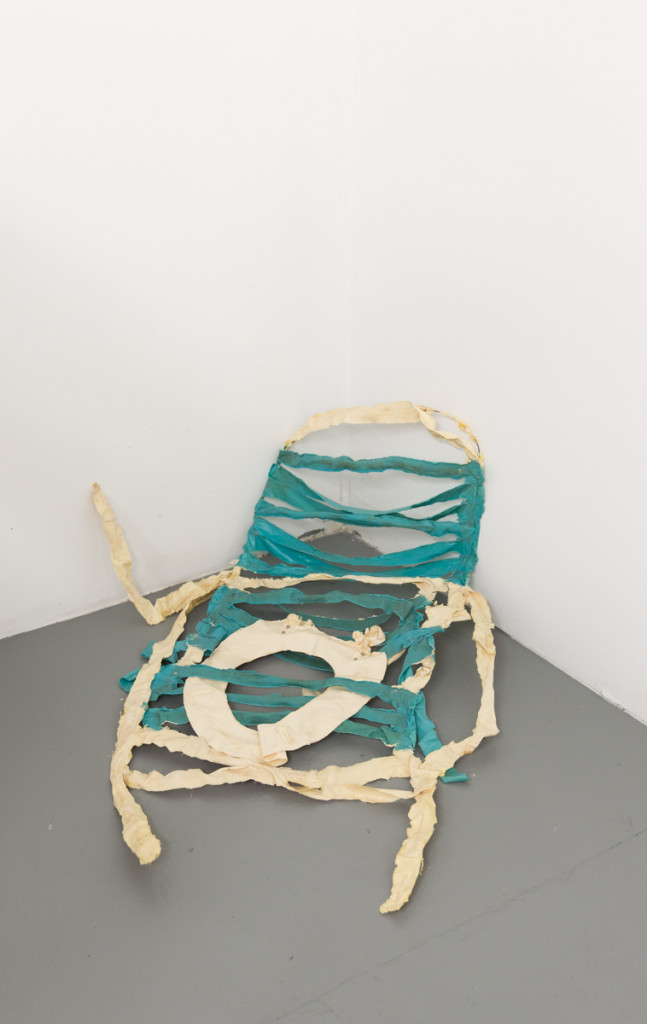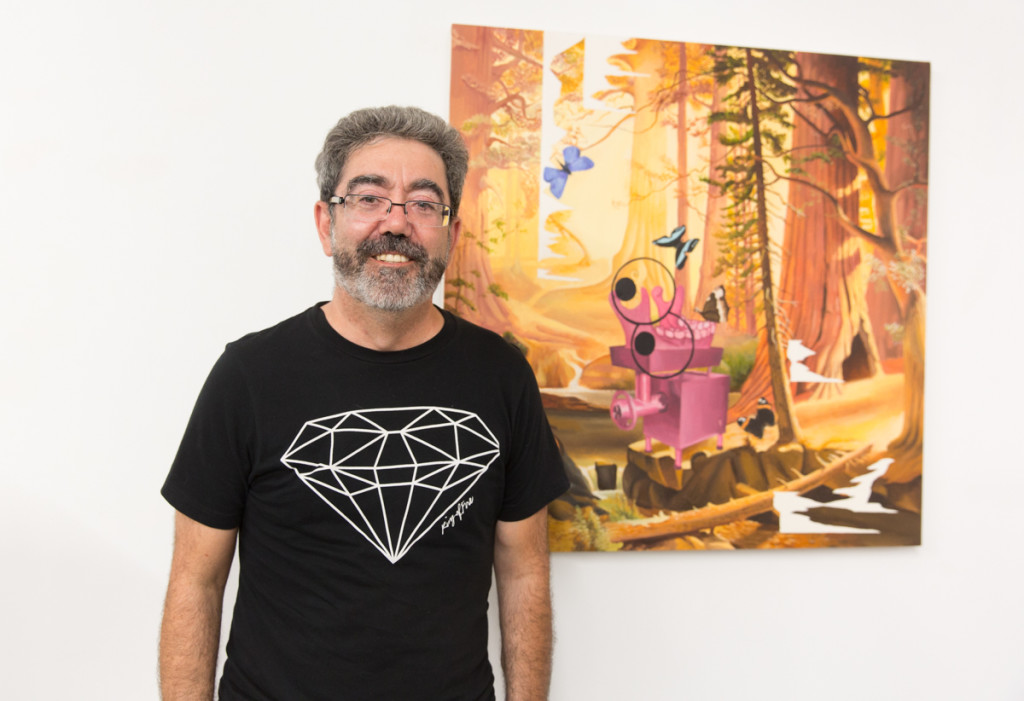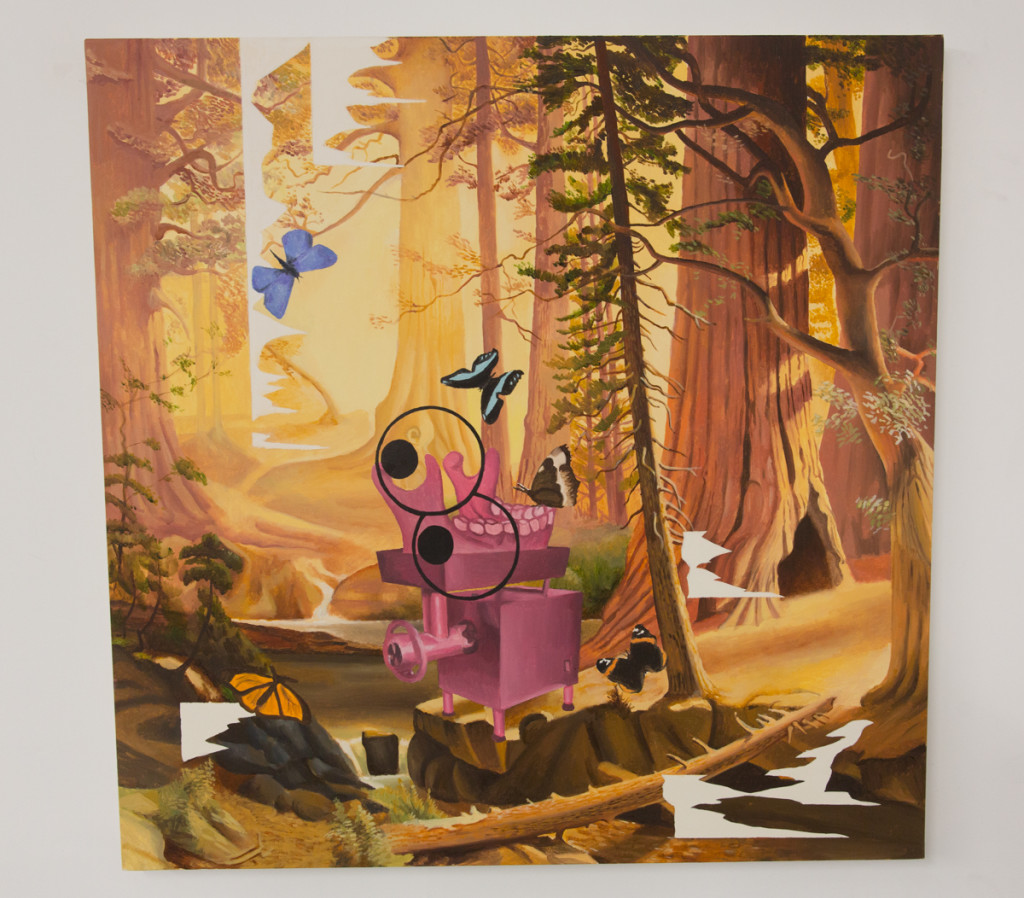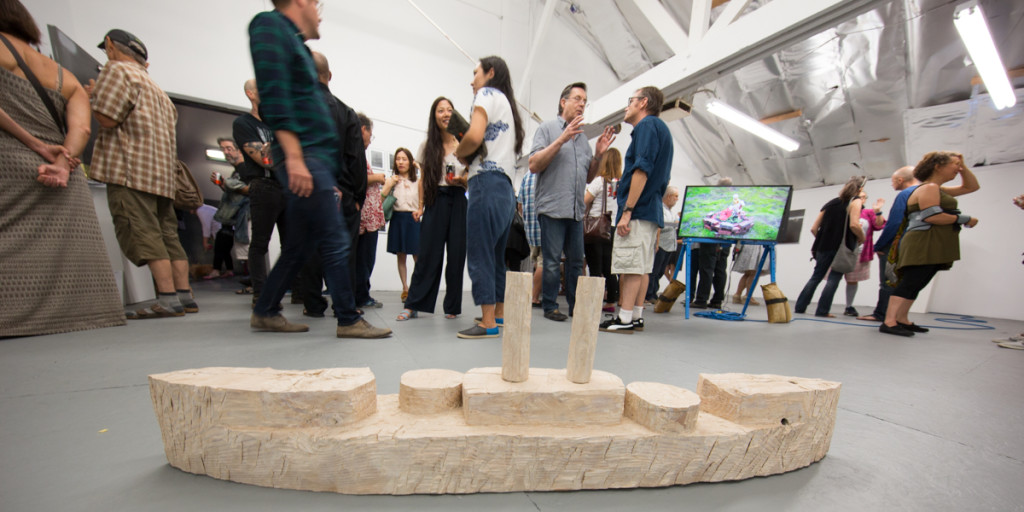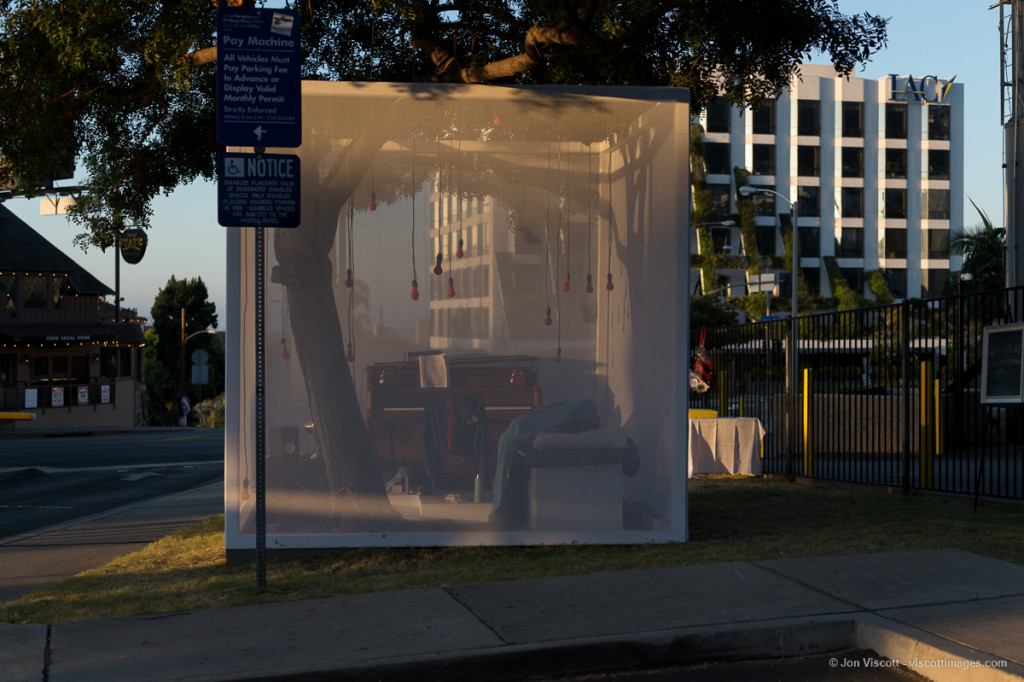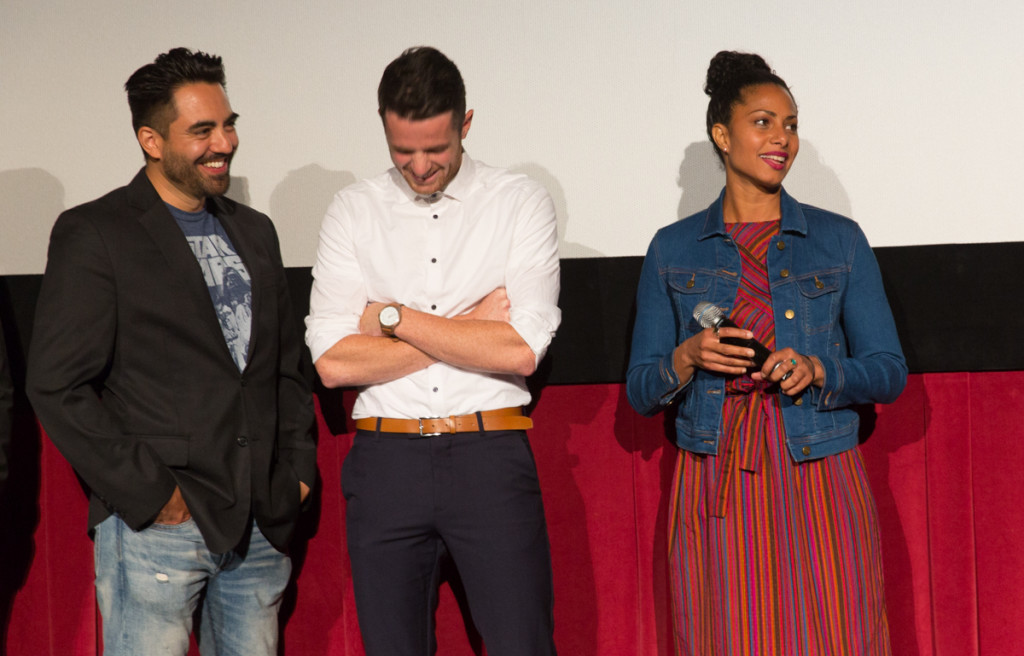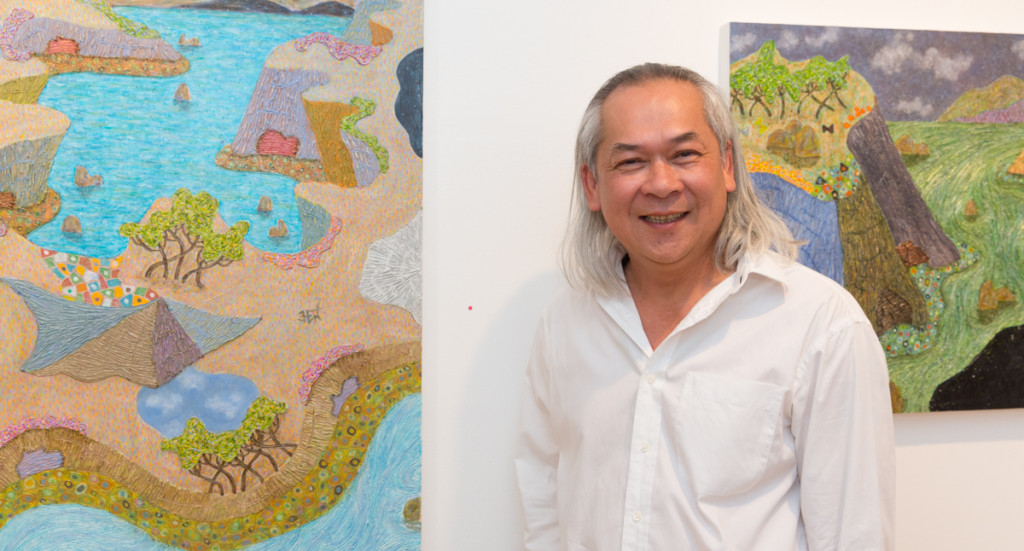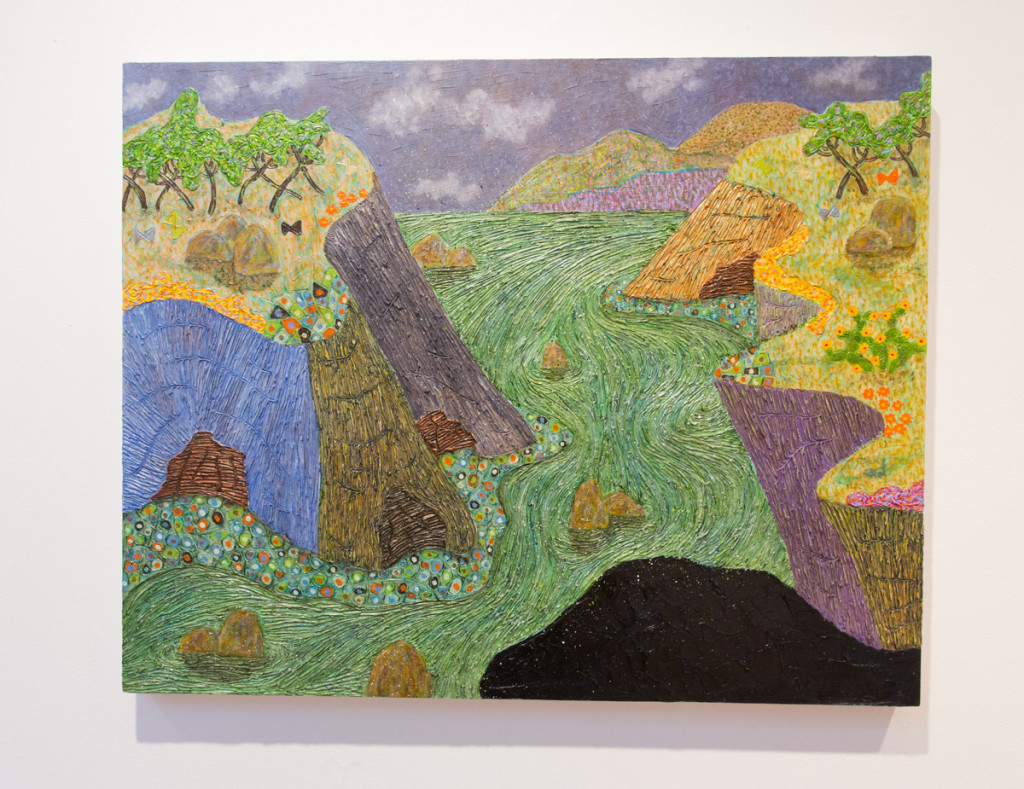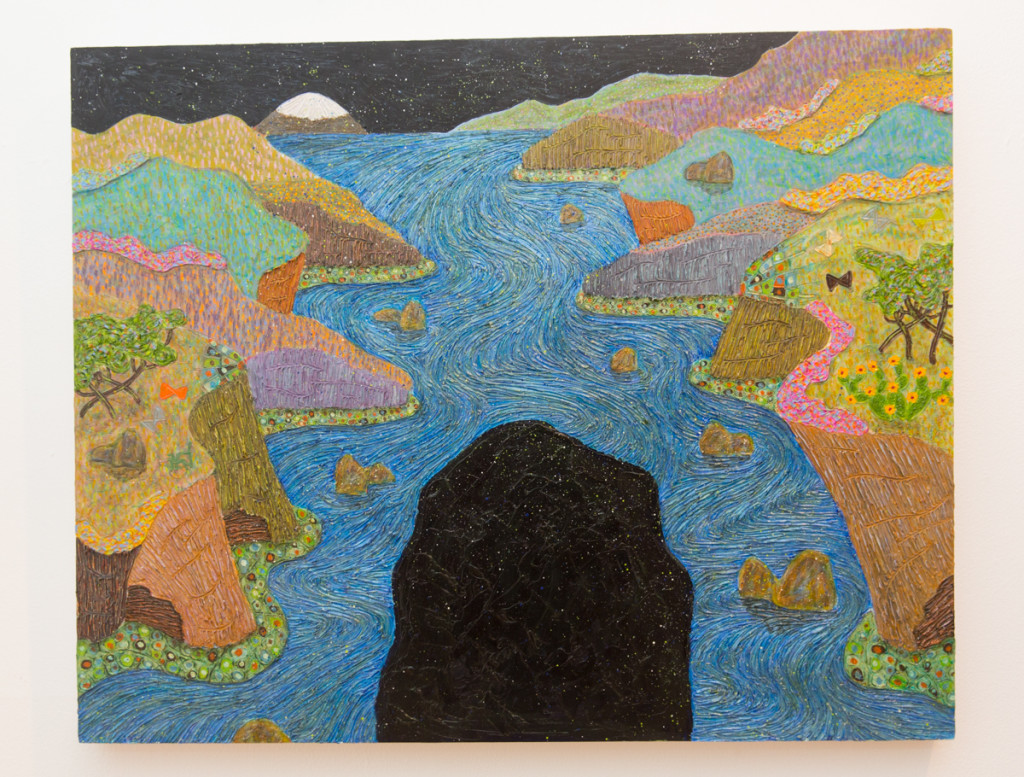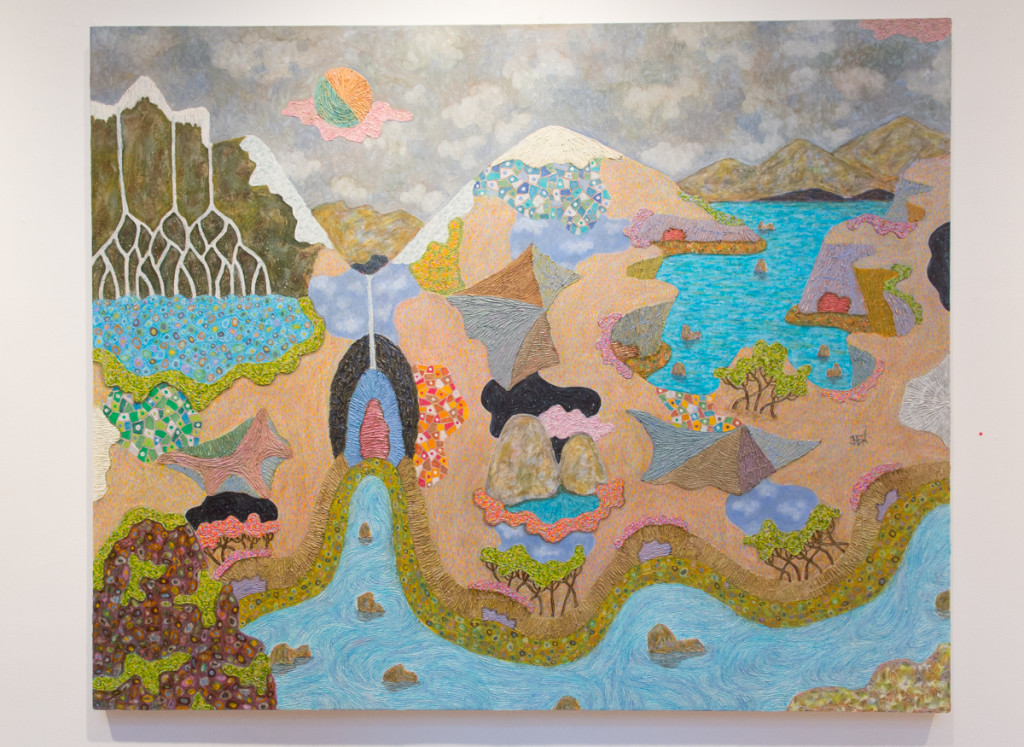BLAM, the Brooklyn and Los Angeles Meet exhibition space hits a home run again with an insightful, magical exhibition that transports viewers out of the August doldrums to distant places both real and imagined.
This multi-media show closes this weekend, so pack your metaphorical suitcases and road-trip it to the realm of On the Distant Horizon in DTLA.
The theme of the exhibition is mirage – something there and not there, “impossible and improbable,” as the press release puts it. But the beauty of the exhibition is more tangible – strongly evocative art in a variety of shapes and forms.
Curator Joe Wolek says the inspiration behind the exhibition was the fact that it was taking place in the month of August – opening was August 7th – a month when people, including the folks here at DiversionsLA, travel.
Above, Wolek with his own work.
The exhibition is a vacation in itself. “We started playing with location and place. My work as a photographer is focused on a specific location or place, but as I visited artists’ studios looking at work, I decided I wanted to make it more lyrical and poetical. The title came from the idea of seeing what’s there, what’s concrete, what’s unknown until it comes into sight,” Wolek explains.
Running in conjunction with the exhibition was a series of evening events, performances, video screenings, and coming up for the closing on August 28th, a party replete with vacation slide show and home movies.
“The exhibition is an artistic investigation, and a way of looking. Artists don’t simply accept delusions and illusions. They create,” Wolek says.
Participating artists include: Nadege Monchera Baer, Dani Dodge, Andrew Freeman, Todd Gray, Michael Isenberg, Ben Jackel, Alanna Marcelletti, Hanna Mattes, Jesus Max, Joey Morris, Ruben Ortiz-Torres, Julia Paull, Max Rain, Christopher Rauschenberg, Shelby Roberts, Amy Russell, Mitchell Syrop, Joe Wolek, Augusta Wood, Kim Ye and Kent Young.
Above, Todd Gray wearing attire belonging to Ray Manzarek.
Todd Gray, is also performing a durational piece in conjunction with Made in LA 2016 at The Hammer Museum by wearing the clothes of Ray Manzarek, keyboardist for the classic rock band the Doors. So a part of that performance overlapped with his appearance here.
Here, as seen above, are images that are taken from his work in Ghana. “I’ve been working with landscapes there. The piece called ‘Serotonin’ on display here is my front yard. The idea behind the piece is technology intersecting with landscape in Ghana.”
Nadege Monchera Baer, above, presents a compelling piece that visualizes a beach clean-up after an oil spill – in a positive light.
“I’m always painting changes in the environment. I’m trying to show our concern about the environment. This is almost a study. My work is usually focused on larger pieces.”
Installation artist Dani Dodge, above, a recent recipient of a national public art award from the Americans for the Arts, created a full immersive and interactive experience in a room separate from the main gallery. Her piece is about both literal and figurative travel, inviting the viewer/participant to answer questions about where they really want to go in life.
Above, Dodge, center, is joined (l to r) by Kristine Schomaker, Baha Danesh, Aline Mare, and the author.
Before entering the room, participants create – with instructions – paper airplanes and fly them into the room, first writing on them expressing where they want to go in life.
Some of us are prosaic: “Iceland, Italy, and Ireland,” I wrote. Others create more spiritual expressions.
Once inside the room, there is a comfortable chair to sit in, a series of slides to watch and Poloroids to rifle through. The walls are covered in shiny silver Mylar, a riff on the industrial, unattractive ceiling of the main exhibition space which also “reflects” the image of each participant in the room’s personal travel scenario.
“I played with the idea of the ugly ceiling and the beauty of travel. I stayed with those two ideas,” Dodge says. She finds travel to be “aspirational.”
Entering the room, viewers can pick from a stack of distractions – from alcohol to Facebook – in a stack of Polaroids, watch the slide show unfold, and slip into a complete and reverential world of memories created and imagined.
“Many of the slides are mine from childhood, others are random vacation photos I purchased on eBay,” Dodge states.
Enter the room an attendee at an art exhibit, emerge a little more well-traveled, a little more in-touch with the longing, the change, the mystery of travel, and what it means to others besides ourselves. It’s a dream-state of an interactive space, and must be experienced to be fully appreciated.
Back in the main exhibition space, viewers will find works that include a piece by Alanna Marcelletti, above, “Wendybird,” whose delicate brush strokes are reminiscent of crow feathers. Crows appeal to the artist because of the families these intelligent birds create.
Her piece melds images that evoke Alice in Wonderland with Peter Pan, shaping overlapping stories on thin, fragile paper. “I’m dealing with gender stereotypes, womanhood, and childhood fiction,” Marcelletti says.
Kim Ye’s “In Pursuit of Leisure,” shown above, utilizes a latex cast of a lawn chair mixed with a latex cast of toilet seat to play off the idea of just what leisure time means.
“I often work in latex. It’s one of my main materials. Liquid latex, when you paint it on a surface, it becomes both a copy and a negative of that surface’s shape. Many people use it for making molds, I use the mold itself as a piece.”
Jesus Max’s “Paradise,” above, features butterflies in a surreal landscape. “This painting is based on 19th Century American landscape artists like Edward Church. I introduced a disturbance in a traditional scene. The butterflies in the redwoods and the torn wall paper are a look into a background that is dark. The meat grinder and the bone in the middle reflect the idea of violence hidden behind the bucolic.”
The opening reception of On the Distant Horizon was Aug. 7th, the anniversary of the 1959 launch of Explorer 6, the satellite that sent back the first digitally transmitted images of Earth.
This weekend, find your own images of Earth, and realms beyond imagining, from noon to 4 p.m. Saturday and Sunday, or attend the exciting exhibition closing from 3-6 p.m. Sunday, August 28th.
The gallery is located at 1950 S. Santa Fe Ave. #207, Los Angeles, CA 90021.
- Genie Davis; photos: Jack Burke




